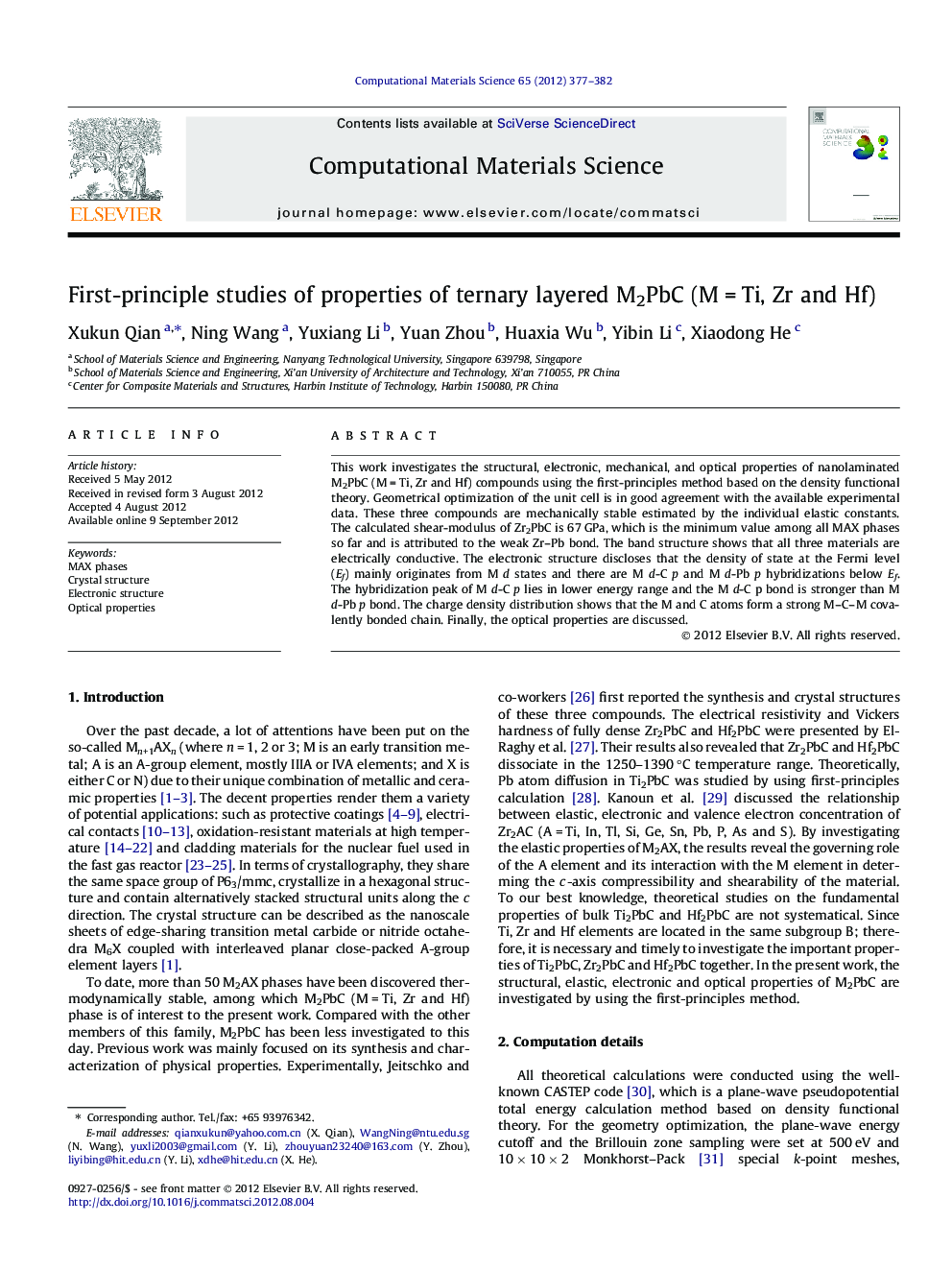| Article ID | Journal | Published Year | Pages | File Type |
|---|---|---|---|---|
| 1561646 | Computational Materials Science | 2012 | 6 Pages |
This work investigates the structural, electronic, mechanical, and optical properties of nanolaminated M2PbC (M = Ti, Zr and Hf) compounds using the first-principles method based on the density functional theory. Geometrical optimization of the unit cell is in good agreement with the available experimental data. These three compounds are mechanically stable estimated by the individual elastic constants. The calculated shear-modulus of Zr2PbC is 67 GPa, which is the minimum value among all MAX phases so far and is attributed to the weak Zr–Pb bond. The band structure shows that all three materials are electrically conductive. The electronic structure discloses that the density of state at the Fermi level (Ef) mainly originates from M d states and there are M d-C p and M d-Pb p hybridizations below Ef. The hybridization peak of M d-C p lies in lower energy range and the M d-C p bond is stronger than M d-Pb p bond. The charge density distribution shows that the M and C atoms form a strong M–C–M covalently bonded chain. Finally, the optical properties are discussed.
► The calculated shear-modulus of Zr2PbC is 67 GPa, the minimum value so far. ► All three materials are electrically conductive and mechanically stable. ► The charge density distribution shows M and C form a covalently bonded chain.
